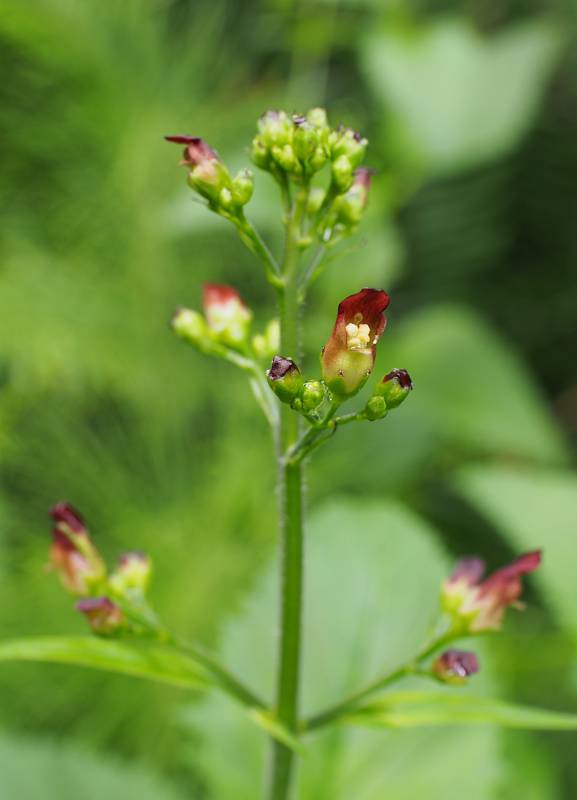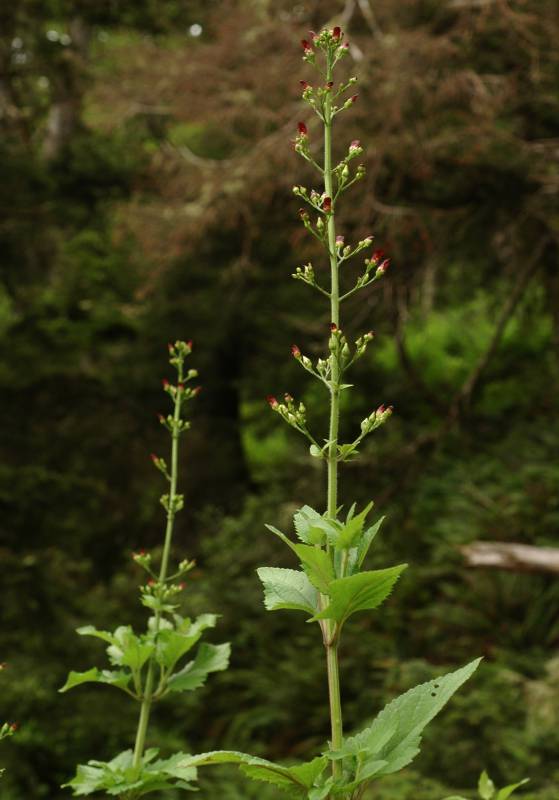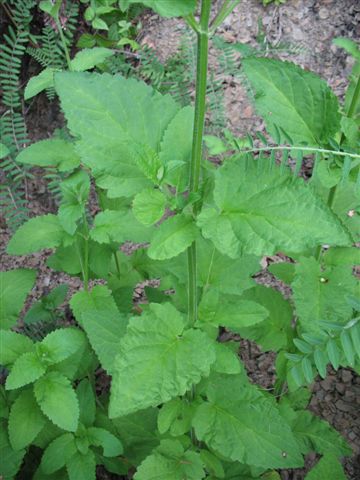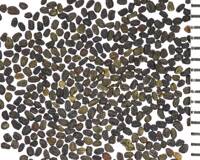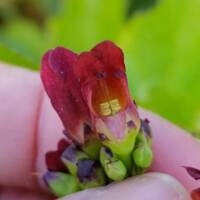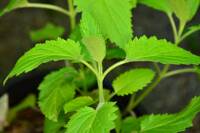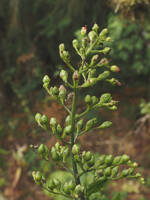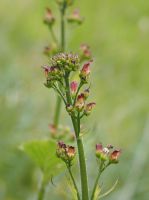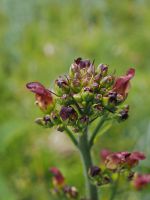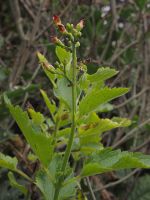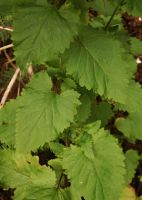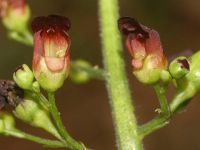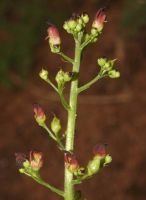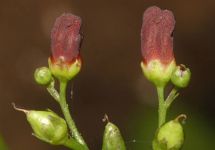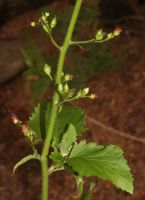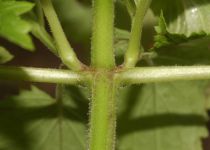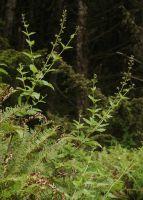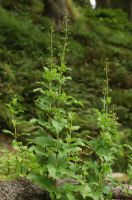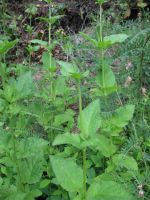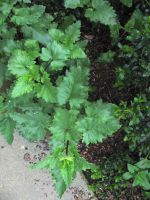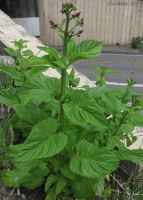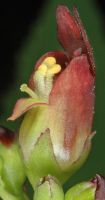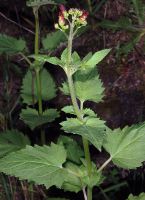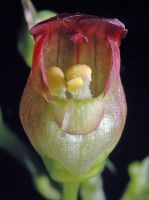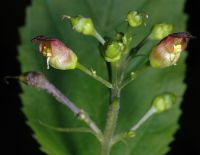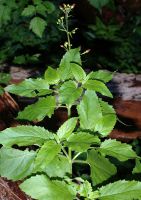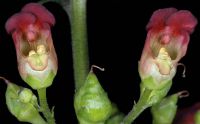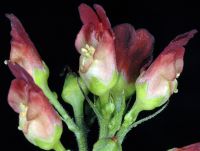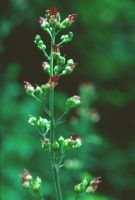Distribution: Occurring west of the Cascades crest in Washington, chiefly in coastal counties; coastal southwestern British Columbia to California.
Habitat: Forest margins, prairies, and meadows at low elevations.
Flowers: May-July
Origin: Native
Growth Duration: Perennial
Conservation Status: Not of concern
Pollination: Bumblebees, bees, wasps, hummingbirds
Herbaceous perennial from a thickened root, the square stems clustered, stout, 5-15 dm. tall; herbage usually covered with fine, spreading hairs, with stalked glands in the inflorescence.
Leaves opposite, all cauline, with petioles 3-5 cm. long, gradually reduced upward, the blades triangular-ovate with pointed tips and truncate bases, 5-15 cm. long and 2-7 cm. wide, sharply toothed.
Flowers numerous in a terminal, open, elongate, nearly naked inflorescence 1-5 dm. long and 3-10 cm. wide, its branches opposite; calyx 5-cleft nearly to the base, the lobes 2-3 mm. long, thin, broad and pointed; corolla 9-14 mm. long, maroon, firm, bilabiate, the upper lip 2-lobed, flat, projecting forward, the lower lip shorter, 3-lobed, the central lobe deflexed; fertile stamens 4, the filaments expanded upward; the fifth, sterile stamen purple to brown, spatulate to obovate, 0.5-1 mm. wide and slightly longer than wide.
Capsule ovoid, 6-8 mm. long
Publication: Linnaea 2: 585. 1827.
Scrophularia oregana Pennell
PNW Herbaria: Specimen records of Scrophularia californica in the Consortium of Pacific Northwest Herbaria database
WA Flora Checklist: Scrophularia californica checklist entry
OregonFlora: Scrophularia californica information
E-Flora BC: Scrophularia californica atlas page
CalPhotos: Scrophularia californica photos

